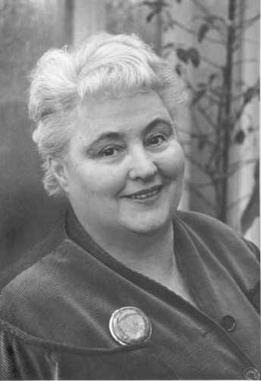 Margery Allingham (Fair Use)
Margery Allingham (Fair Use) |
Margery Allingham, 1904-1966, is considered one of the top four female mystery writers of the Golden Age of Mysteries (1920s and 1930s). Her primary detective is Albert Campion, an odd character who may have been purposly developed to be the exact opposite of Sayers Lord Peter Wimsey. The first of these books was written when Allingham was only 23. Campion is tall and thin, wiry and toothy, with an overbite and a receeding chin. He doesn't appear to be mentally competent, let alone intimidating. In short, I find him hilarious.
Campion matures over the course of the series, but in the beginning one is not sure whether he's a freelance adventurer, a crook, or a police agent. He appears to be a man-for-hire to do any sort of dangerous task. There's a hint that he's the younger son of a famous British family.
This is a British series, and some of the books use a fair amount of period Brit slang that is a bit incomprehensible, but one can usually figure it out.
Overall, I give this series 5 stars. I like it that each of the books is quite different from the others. They are not formulaic. Allingham's understanding of human nature is excellent. The characters have real and unique personalities.
The collection of stories,
The Return of Mr. Campion, includes a tongue in cheek biography of Campion by Margery Allingham. She also explains how he came to be in her books.
The dates of most of the short stories are uncertain, but I've tried to place them in the generally correct era.
Recurring Characters of Note:
Albert Campion
Magersfontein Lugg, his servant/companion
Inspector (becoming Superintendant) Stanislaus Oates, Scotland Yard
Lady Amanda Fitton
Captain Charles Luke, Scotland Yard
#1
The Crime at Black Dudley/The Black Dudley Murder (US title), 1929
This first in the series is told mostly from the point of view of George Abbershaw, a medical examiner who occasionally does work for Scotland Yard. He has wrangled an invitation to a party because the girl he thinks he's in love with is going to be there. The party is in a huge old castle of a house in the middle of nowhere. The guests are mostly young people except for an uncle of the young owner, Wyatt. The uncle was a war veteran and wears a mask to hide his disfigured face. There are also two other silent and hulking men in the party.
The young host tells a tale from the family history involving an ancient dagger and a game played in the dark. Everyone wants to play. During the 15 minutes of darkness, the uncle dies of an apparent heart attack.
Following this, the two strangers take over the house and demand the return of some papers that also went missing during the game.
This story is extremely well done. The old house has everything it should-- secret passages and rooms, no electricity, a remote location. There is a continual challenge for the reader to figure out what is really going on underneath what the characters say. There is the romance of George and Meggie.
The figure of Campion is introduced, although he's not a major character. Following this book, the public wanted more of this strange little man, and Allingham complied.
#2
Mystery Mile, (1930)
Mystery Mile is the name of a village out on the salt flats of a peninsula. The "mystery mile" is a bank of fog that always fills a long valley, rendering it dangerous at various stages of the tide.
Campion is friends with the owners of the manor house, and takes it upon himself to "hide" an American judge there whom the criminal mob is trying to kill, or at least warn off. The American has a son and daughter who get along famously with the young man and his sister who own the manor house.
But somone is still stalking the judge. A completely annoying art dealer is trying to buy one of the family paintings, and an itinerant fortune teller shows up for an evening of amusement. The vicar commits suicide. Then the judge completely disappears!
(It's hard to believe that Allingham was only in her 20s when these first few books were written. She gets the young people right, but she also gets all the characters right.)
#3
Look to the Lady/The Gyrth Chalice Mystery (US title), 1931
This book is brimming with all sorts of British midaeval traditions, a tower with a secret door, faeries, monsters, and witches. Or maybe not!
Campion has now stopped taking any sort of cheap assignment he can find. An uncle has left him money, and he is now free to choose the sorts of jobs he likes. The assignment this time is to protect a chalice that was supposedly made before 1066 AD that has been entrusted to the care of the Gyrth family throughout British history. Campion befriends "Val," Percival Gyrth who will be inducted into the family secrets surrounding the chalice on his upcoming 25th birthday.
Meanwhile, his aunt has decided to take on her role as "Maid of the Cup," an assignment that has been downplayed in recent years. She shows the chalice in public, much to the embarrassement of the family. Organized crime is trying to steal the chalice and is currying favor with Aunt Di.
Several days later, she is found dead in the faerie ground, apparently having died of fright at seeing something dreadful. Then Campion's servant sees it too!
This is a wonderfully improbable plot, but it's enticingly easy to believe in old legends.
#4
Police at the Funeral, 1931
Campion now calls himself a Deputy Adventurer. He agrees to meet a young woman as a favor to a friend to discuss the disappearance of one of her uncles and gets sucked into one of the most dysfunctional families you can imagine. Great-Aunt Caroline rules the collection of close and distant relatives with an iron hand, and she can get away with it since she supports them all.
Members of this family group begin to die, and it really looks as if one of the other persons in the family is doing the killings.
Short #1
The Hat Trick, date uncertain but September 17 was a Wednesday, so it must be either 1932 or 1941 (because of leap year there was no such combination between these). Since Albert is not married, it must be 1932. In the collection
Mr. Campion and Others
Campion is given a small onyx pocket charm of a top hat. When he accidentally displays this item, he receives deferential treatment and is considered a special person. He tries the charm in several other places with the same effect. What is going on?
Short #2
The White Elephant, date uncertain but Oates is still an Inspector. In the collection
Mr. Campion and Others
A girl who is a friend of Campion's is gossipping about some recent robberies taking place among her smart friends' families. The hired man has a record and he is sent to work for the girl's boyfriend's aunt who has a big charity event called the White Elephant each year.
Short #3
The Old Man in the Window, date uncertain but Inspector Oates is promoted to Superintendant. In the collection
Mr. Campion and Others
At Oates celebration of becoming inspector he becomes drunk. There is an embarrassing scene with several people Campion knows while an engagement is broken. Oates predicts that there will be serious consequences of the actions they witness.
#5
Sweet Danger/Kingdom of Death/FearSign (US titles), 1933
This book has everything expected of a Brit mystery from the "transitional" time period. To me, that means the changes from the older, days of earls ruling over areas from a mansion with its accompanying village and days of hard beliefs in the supernatural to the more modern concepts of freedoms for women and scientific methods.
The line of the Earl of Averna has apparently ended, yet the humble Hal, whose family runs the near-defunct mill, believes he is the rightful heir, but no one can prove that his father actually married his mother before going off to World War I and losing his life. Albert and friends set about to find the items mentioned in a riddle which will restore the earldom, but some shady characters are also hard on the trail for reasons of their own. The local doctor also has an agenda that doesn't suit anyone.
Young Amanda, Hal's sister, shows tremendous spunk and wins Albert's admiration. The bad guy meets a classic fate.
Short #4
(The Case of) The Man with the Sack, date uncertain but it appears to be while Campion was still quite young, in the collections
Allingham Minibus and
My Friend Mr. Campion
Campion is urged by a young friend to come spend Christmas with her family. The boy she loves is there, although his father is in jail. There is also a family that are friends of her mother, although they don't seem to fit in very well. The situation is tense, and in the midst of a children's Christmas party, a theft occurs.
Short #5
The Widow, date uncertain but it appears to be while Campion was still quite young, in the collection
Mr. Campion and Others
Superintendant Oates has been trying to find proof of crime against a known criminal for some time. Campion is called to stand in for a wine seller at an important business meeting where he and other men in the same business are shown a remarkable scientific experiment.
#6
Death of a Ghost, 1934
The famous painter, John Lafcadio, died several years ago, but he has left a series of painting to be unveiled, one per year, to keep his name in the public eye, and to boost the value of his works.
His family and friends are the eclectic bunch you would expect of an artist. The widow is a holdout for an earlier generation, although she still manages to function as the matriarch. In her household live the former "inspiration," Beatrice, a woman of shocking honesty who sees auras around people, the granddaughter, a young artist herself who was planning to marry another young artist. However, he married an Italian woman, only for convenience, so he could get her into the country to be his model.
There is also the man who used to mix the master's paints and his wife, who more or less serve the family but are also somewhat independent.
The other major character is Max Fustian, who is the man left in charge of the yearly presentations of the Lafcadio paintings.
The lights go out, and one of the players is stabbed. Max confesses, but things are not as they seem.
The fate of the guilty party is a classic cop-out, but then... I've used it myself. It is classic, after all.
#7
Flowers for the Judge/Legacy in Blood (US title), 1936
This is not one of my favorites of the series.
The story revolves around a family publishing business which is now run by one son and several grandsons of the founder. The other son disappeared years ago and has never been found. One of the grandsons dies, and it is soon revealed to be murder. His cousin is arrested because of his friendship with the dead man's wife.
The story is a bit far-fetched, but I could live with that if the ending were more complete. It didn't seem to me that it was clearly established who the actual guilty party was. I guess you could say that Allingham has confidence in the intelligence of the reader, but I found it unsatisfactory.
Short #6
My Friend Mr. Campion, 1935, in the collection
My Friend Mr. Campion
This is the transcript of a monologue given by Allingham explaining how Albert Campion came to be in her books. Humouous
#8
The Case of the Late Pig, 1937
On the very morning of reading a funeral notice for a schoolmate, Albert Campion receives an anoymous note about this same person. The schoolmate was not well liked, in fact his nickname was Pig. Campion attends the uneventful funeral and forgets all about it.
Six months later, the same man appears to die again, and not by accident. However, it is quickly determined that this man is Pig's brother. These two deaths can't be coincidence. Then the brother's body disappears!
This story is told by Albert in the first person. This is not as good a read as some of the others.
.
#9
Dancers in Mourning/ Who Killed Chloe? (US title), 1937
Allingham is back to full, excellent form in this story. The main characters are mostly members of a stage troupe of a highly successful musical. Members of the cast, the producer, the songwriter/musician, and family members are all staying at the country home of Jimmy Sutane, the star. A worn-out dancer shows up and is mysteriously allowed a dance number in the 300th performance of the musical. She also comes to the house to stay. Jimmy claims to have not previously known her, but she says they are old friends. Then people start dying.
Murders set among theater people are always good because you can't tell who is acting oddly and who is simply being an eccentric thespian.
Campion's "Uncle William's" patently fictional memoirs served as the inspiration for the musical, so Campion becomes involved with the group, but he doesn't like the solution he is forced to arrive at.
And, incidentally, Albert falls in love!
Short #7
The Definite Article, around 1937, in the collection
Mr. Campion and Others
This story is very similar to The Black Tent. Campion takes on a seemingly impossible case to find a blackmailer. The funniest part is that he was driven to seek out Oates to get away from an old lady gossip who simply won't shut up.
Short #8
The Black Tent, 1937, in the collection
The Return of Mr. Campion
Despite being written in 1937, this story did not appear in original form until this collection was published in 1987. Shorter, reworked versions under the title "Definite Article" were published earlier.
Campion sees a teenage girl sneaking something out of a dresser. He is later approached by an American to help him find a man who drove his wife to suicide through blackmail. Albert sees a connection.
Short #9
The Case is Altered, 1938, in the collection
The Return of Mr. Campion, and also
The Bedside Book of Murder
Campion is traveling to a party with acquaintances of his on a train. One who is a friend receives a note, he supposes from a pretty girl, to meet him late in the evening. Meanwhile, Campion finds some intereting papers.
Short #10
Safe as Houses, 1938, in the collection
Mr. Campion and Others
Campion's Great Aunt Charlotte is insisting that someone was in her house while she was away, although nothing was taken. Instead there is a stack of writing-paper bearing an address that does not exist. She wants Albert to figure out what happened. Then a young woman shows up asking for the same non-existent address.
#10
The Fashion in Shrouds, 1938
This is another excellent addition to the series. This time, the fashion industry is the setting for the story, and Albert's sister is involved, not always looking squeaky-clean when it comes to behavior.
One of the models. Georgia, begins carrying-on with a man who is not her husband. But the husband, not to be so easily put off, finds another model who looks strikingly like his wife, pays for designer dresses to match his wife's and parades her around town. The second time he does this, he takes her to the club where his wife is dancing with her new interest!
Albert has come to be entiwined in this matter only because a former boyfriend of Georgia's had disappeared three years ago. His body had recently been found, and the death was a suicide. The man's father has hired Albert to try to discover why his son did this.
People begin to realize that the boyfriend disappeared after Georgia started dating her current husband. And now, the husband may become inconvenient. Is he in danger?
Albert marries Amanda Fitton.
Short #1q
The Dog Day, 1939, in the collection
The Return of Mr. Campion, and also
Circumstancial Evidence
Campion overhears a conversation on a beach and notices the somewhat unusual dog.
Short #12
The Name on the Wrapper, date uncertain but Campion is said to be 35, and is still single, in the collection
Mr. Campion and Others
Campion comes upon an overturned car that has been abandoned. He finds a lady's ring in the road nearby. The police arrive and think that Campion has stolen the car! As it turns out, there was a jewelry heist at a nearby party the night before. Campion neatly solves the problem. For a short story, this has a nice twist in it.
Short #13
The Frenchman's Gloves, date unknown, in the collection
Mr. Campion and Others
Date uncertain, but Oates is already a Superintendant, so it also has to be in the middle years.
A French jewel broker comes to London to meet the parents of his potential son-in-law. However, after checking into the hotel he disappears.
Short #14
The Longer View, date unknown, in the collection
Mr. Campion and Others
Date uncertain, but Oates is already a Superintendant, so it also has to be in the middle years.
Campion and a friend end up exploring a derelict building where the friend used to live. In a large closet they find very recent writing, in lipstick, saying "O Let Me Out" written over and over around the walls.
Short #15
The Meaning of the Act, date unknown, in the collection
Mr. Campion and Others
This is another espionage tale, beginning with the lady friend of Campion's chum Lance becoming concerned that her uncle is suddenly traveling all over England to see a somewhat sleazy dance act wherever it is performed.
Short #16
A Matter of Form, date unknown, in the collection
Mr. Campion and Others
Oates and Campion are enjoying a drink together when Oates spots a known crook at the bar. The man is tipsy and brags perhaps a bit too much to Oates.
Short #17
The Danger Point, date unknown, in the collection
Mr. Campion and Others
Campion is at a dinner party given by his godmother. A young man he knows is carefully watching his girlfriend whose company is being dominated by an older man. However, the emotion Campion detects is not jealousy, but fear.
#11
Traitor's Purse/The Sabotage Murder Mystery (US title), 1941
Set in war time, this book involves espionage and national crimes. Other than that, I don't want to say too much because even telling the very beginning gives away some of the suspense.
It is a very unusual trope for a mystery. In fact, I had not encountered a book quite like this before. I tried to look it up, and may have found a few other titles with a similar technique employed. I may have to read a couple of them to compare.
One thing I can say is that if you are a lover of books with passages in caves under mountains, you will like this book.
Short #18
Mr. Campion's Lucky Day, date unknown, in the collection
The Allingham Minibus
Although I could not find a known date for this story, Campion and Inspector Oates are named as great friends, so it has to be in the middle years. This is a very short story.
The inspector is called to a murder scene. Campion is with him, and although a man who is a very likely suspect is on the premises, he has a certain alibi for the time of death. The dead man played the horses, and was likely a blackmailer, although Oates has no proof of that. The doctor who lives upstairs found him dead at ten o'clock. Within a very few minutes, Campion solves the crime by logic.
Short #19
The Question Mark, date uncertain but Campion is still unmarried and taking young ladies to lunch, but he is friends with Oates. In the collection
Mr. Campion and Others
A young lady who is a friend of Campion's has hired the boyfriend of her maid to play at being a detective. She thinks this is the cheapest way to keep him occupied until her maid tires of him. Her motive is to keep the maid. However, the "detective" uncovers the loot from a major heist of heirloom silver.
Short #20
The Unseen Door, date unknown, in the collection
The Allingham Minibus
Although I could not find a known date for this story, Campion and Inspector Oates are named as great friends, so it also has to be in the middle years. This is another very short story.
Oates calls in Campion to help him solve what appears to be a closed-door mystery. There is the body of a man who was the informant in a huge scandal several years earlier. The man he testified against was just released from prison, but no one has been in or out of the club building where the murder took place except the doorman and a small cripple, both too old and frail to have strangled the man. Campion's logic to the rescue again.
#12
Coroner's Pidgin/Pearls Before Swine (US title), 1945
I have to say that I don't understand the British title of this book. Pidgin has only one meaning that I can find, which is just what I thought- it's a simplified version of a language used by people who need to be able to understand each other. OK, there was a scene at the end where the coroner managed to keep the inquest moving by being very vague, but it seemed like this was pretty minor to the plot.
This book is also set in war-time London, and gives an interesting insight into the mentality of the young people of the era in contrast to the older generation. Young adults took the attitude that one had to live right now, because you might not be alive in ten mintues. However, the upper class of the previous eras were still determined to keep the social heirarchy intact.
The basic story has to do with ways in which so many art and cultural treasures ended up in the hands of the Nazis. Campion has just come home from an implied long-term assignment doing espionage. He is looking forward to a long leave and some relaxation. However, within minutes of his arrival he is thrown into a new mystery, coshed and dumped in an alley!
#13
More Work for the Undertaker, 1948
I found this book difficult to follow because there is so much period slang in it that I often could not follow the dialog even through context. But the plot is cunningly complex and satisfactory.
Campion is summoned by his friend Lugg to come to Apron Street and figure out what's been going on in an old estate. It's an ancient London neighborhood with alleys and mews, shops, and one grand home. That family was in its heyday in the 1890s and would like the world to remain as it was then. However, it's now just post-WWII and the world has changed considerably. The house is lived in by a group of adult siblings. The family has fallen on hard times, and there is very little money left. One brother dies of a stroke, and then a sister dies of poison. Suicide is believed until the chemist's report comes in. Will the exhume the brother?
The youngest sister is eccentric, always brewing up natural concoctions with herbs she finds in the park. The housekeeper has some strange hold over the family. And a neice keeps sneaking out over the rooftops to visit with her boyfriend.
Amid all this mayhem, the undertaker across the street seems to have something going on the side, but no one can figure out what. And the old, private bank at the other end of the street is also committed to keeping things as they were a half-century earlier.
#14
The Tiger in the Smoke, 1952
One of the things I like about this series is that the characters age. Although Campion is probably not twenty years older than in the first book of the series, he is certainly no longer the young adventurer with total confidence in his own abilities. He's now usually working with the police. This story touches his own family.
Meg, a young cousin of his, a war widow, is engaged to marry a man who is very much in love with her, and she with him. Then, suddenly, she begins receiving notes that report sightings of first husband. His body had not been found, but he had been listing as missing in action. She is dismayed. Her fiance does not know quite how to react, but discovers that he is intensly jealous.
Then grainy photographs are sent with the notes. They look very much like her husband. The police decide to trap this man and discover if he is an impersonator. But this is all in the very beginning of the book. What is going on?
Adding to the mystery is a two-day London fog that covers everything with a gray and yellow pall. The descriptions are perfect. A band of disabled veterans who live on the streets and care for each other provide a grotesque but realistic element of suspense.
Of course, Allingham manages to connect the story back to pre-war lifestyles and values with ease.
#15
The Beckoning Lady/The Estate of the Beckoning Lady (US title), 1955
The Beckoning Lady is the name of a pub in the region where Campion grew up. He and Amanda have returned to the area for a Midsummer's Party at the home of friends. This is the first book in which their son, Rupert, gets more than a passing mention.
The party takes place not long after the non-unexpected death of Campion's "Uncle" William. There are a lot of characters to keep straight in this story which adds to the general confusion.
However, the primary mystery in the story is the murder of a man who is introduced in Chapter 1 as he is hit over the head and falls off a bridge. However, his body is not found, and his identity is not revealed until later in the book.
As usual, Allignham manages to make each of her books different from the others, a feature I really like. And the solution to the crime? It's wrapped up nice and neathly.
Short #21
The Curious Affair in Nut Row, 1955, in the collection
The Return of Mr. Campion
#16
Hide My Eyes/Tether's End/Ten were Missing (US titles), 1958
This is an astonishingly timely trip into the mind of a serial killer. Despite the setting in a pocket of decaying pre-war London, the reader sees the events either through the eyes of the criminal himself or the man who spends most of a day with him and smells a rat.
Campion is part of the audience as Detective Luke reminisces about a case he had solved years before. The man who lives in an attic above the Society of Marine Research reports to the police that Martians have been landing on the roof and coming up the stairs.
Short #22
What to Do with an Aging Detective, 1958, in the collection
The Return of Mr. Campion
This is a tongue-in-cheek interview between the author and Campion, and then his "man," Magersfontein Lugg.
Campion is involved in the solution, but his role is relatively minor.
#17
The China Governess, 1962
Unlike some authors, Allingham's stories seem to improve as she ages. This is another excellent entry in the Campion series. One of Allingham's standard sources of tension is the difference between the way the world was perceived by an older generation and the way young people want to live. In the pre-World War stories, the older generation wants the class system and the Victorian formality to contine with ramifications of every action rippling down through decades, while the unsettled world of the young made them want to live life in the moment because the whole country might be blown up the next day.
In this story, the young adults are the babies born to that generation who seized the present. In fact, the bones of this plot are based on the fact that many babies born in the early days of the bombings in Britain had no papers, or the wrong papers. Some of them were lucky to be alive and to have been cared for by any decent family. And yet, that stodgy British protection of family decency still lingers and haunts.
Basically, a young man who want to marry his underage love is shocked that her father will not give permission until he can prove who he is genetically, not just the adopted son of the prestigious family who has raised him. However, that family has more skeletons in the closet than just the young man's credentials.
#18
The Mind Readers, 1965
This is a straight-up cold war espionage tale, a very interesting twist on the collection of Campion stories.
the series was continued by other authors, and there are a number of short stories to be added to the list.
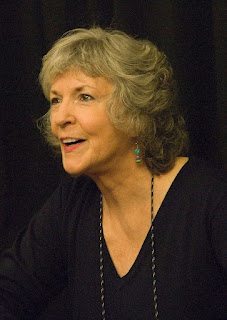

 Agatha Christie (Fair Use)
Agatha Christie (Fair Use)  Margery Allingham (Fair Use)
Margery Allingham (Fair Use) 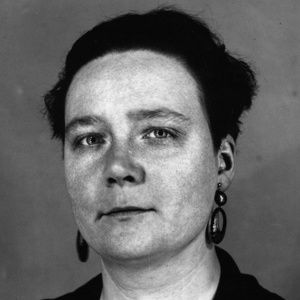 Dorothy L. Sayers (Fair Use)
Dorothy L. Sayers (Fair Use) 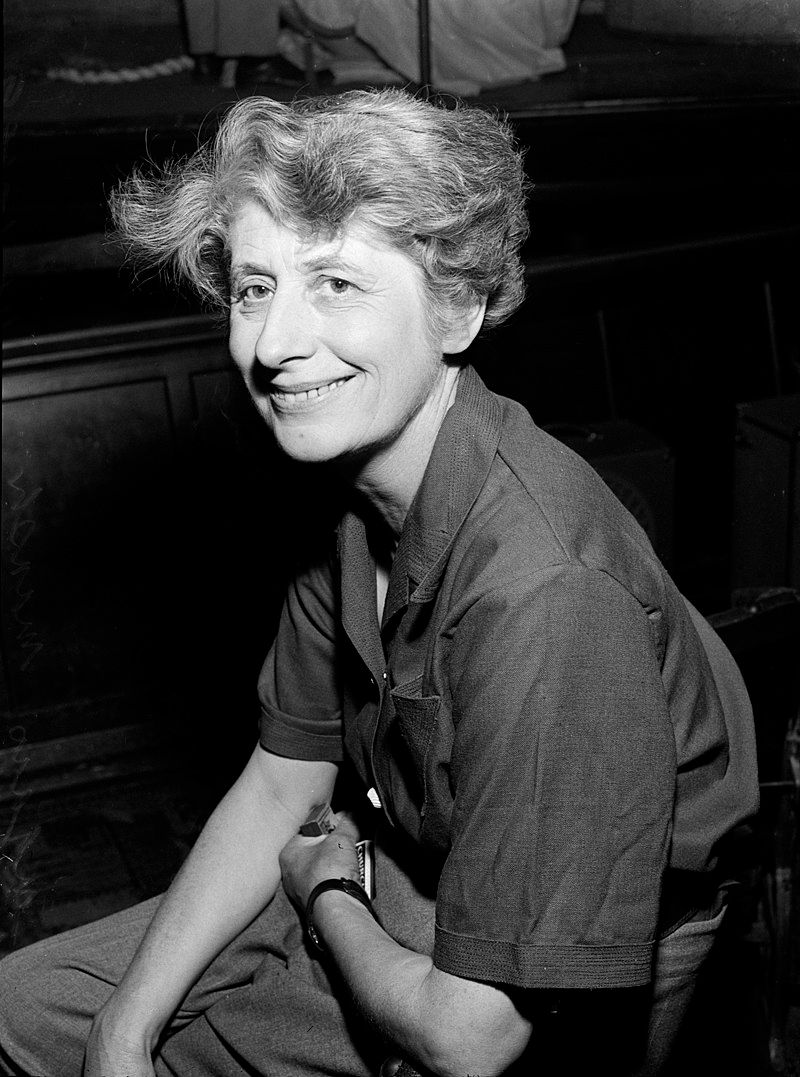 Ngaio Marsh
Ngaio Marsh 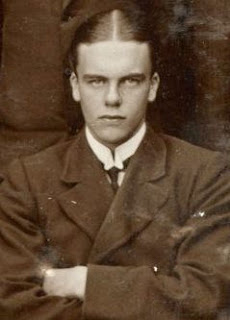 Anthony Berkeley Cox (public domain)
Anthony Berkeley Cox (public domain)